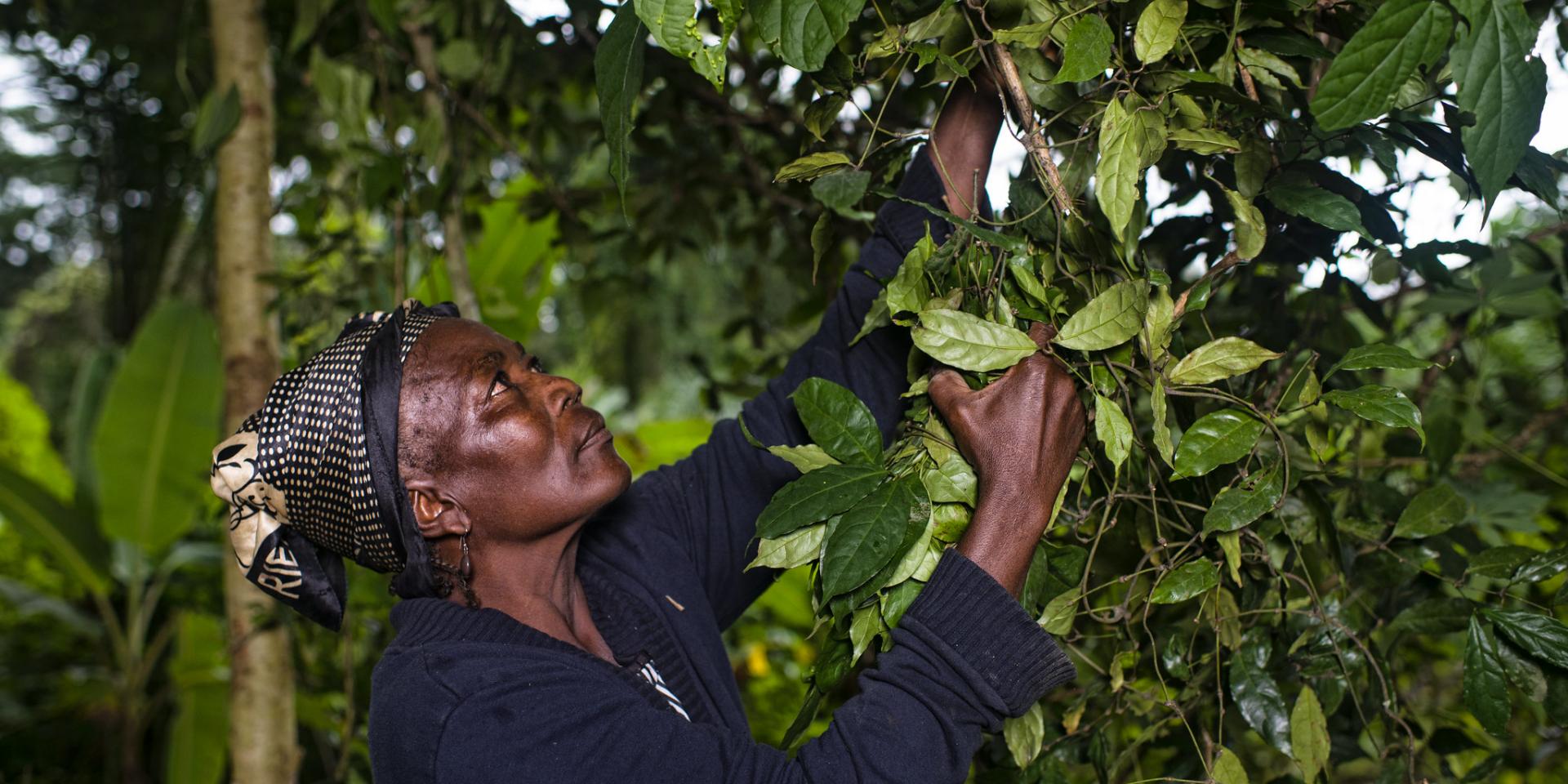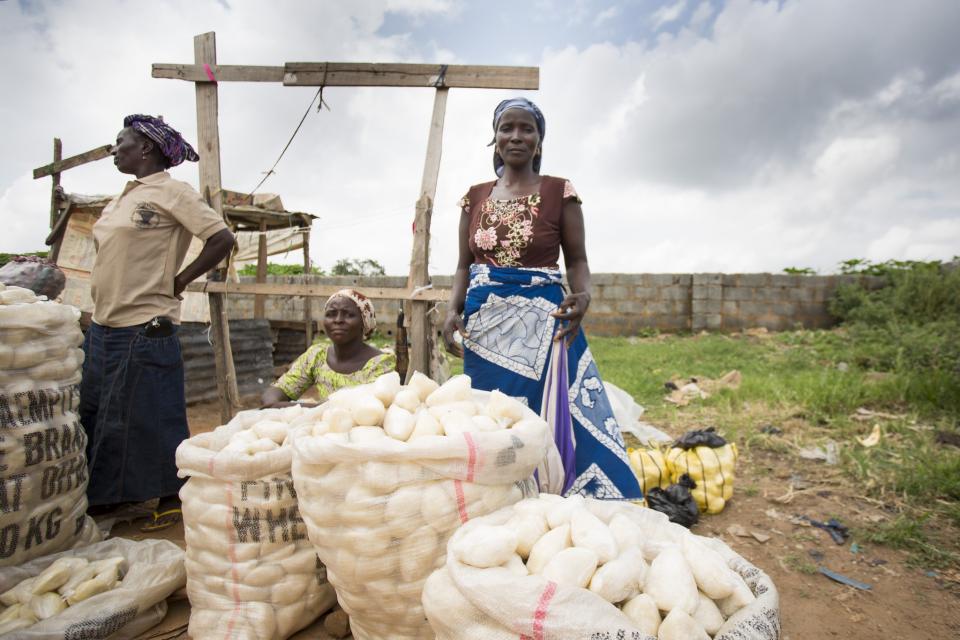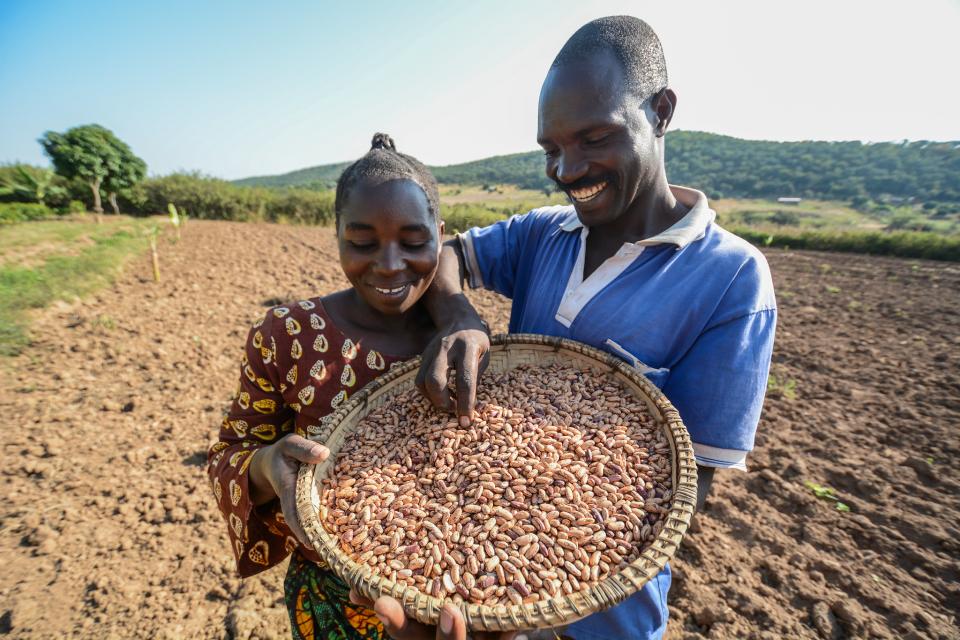Can Neglected and Underutilized Species Provide a Pathway to Women’s Empowerment?

A women harvests all the leaves from Gnetum spp. (okok) in village of Minwoho, Lekié, Center Region, Cameroon.
Photo by Ollivier Girard/CIFOR.
Neglected and Underutilized Species (NUS), also known as ‘minor’ or ‘orphan’ crops, are often celebrated for their potential to advance gender equality and women’s empowerment. However, narratives about women and NUS are often overly simplistic. We revisit four commonly held assumptions about women and NUS to paint a more nuanced picture based on a review of available research on the topic.
Global diets are dominated by a small range of staple crops, but there are thousands of NUS that are more nutritious, require fewer inputs and are more adaptable to climate change than their mainstream counterparts. Conservation and cultivation of these NUS — also known as ‘minor’ or ‘orphan’ crops — could greatly help promote food and nutrition security in the era of climate change. Many NUS are indigenous crops, which are part of more traditional agricultural systems and carry cultural significance. Importantly, NUS are also celebrated for their potential to advance gender equality and women’s empowerment.
Yet, evidence on whether or how that happens is mixed, and as diverse as the localities where these crops are found. Below, we revisit four commonly held assumptions about women and NUS, and paint a more nuanced picture based on a review of available research on the topic.


